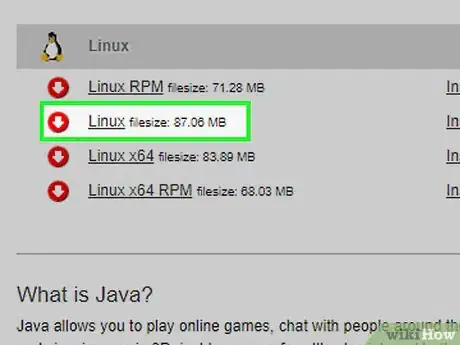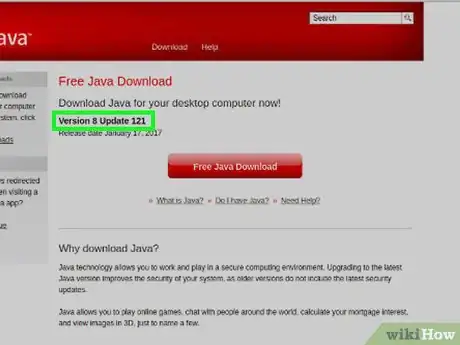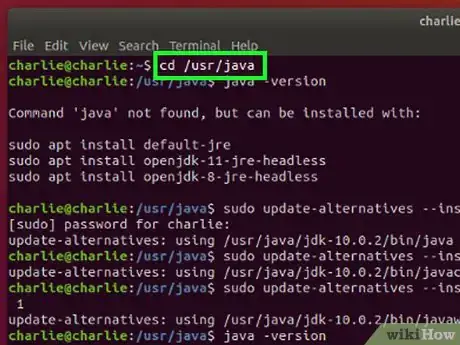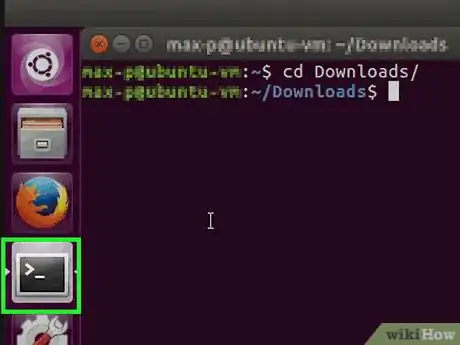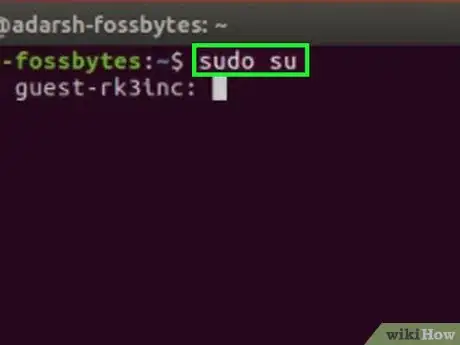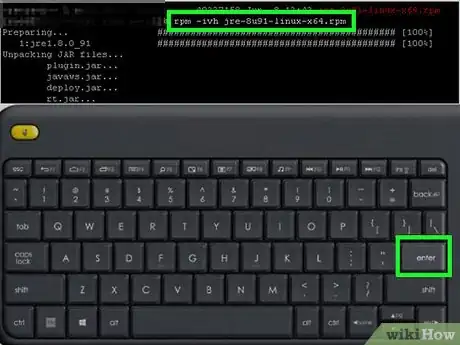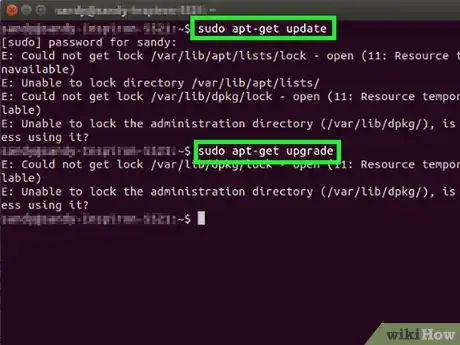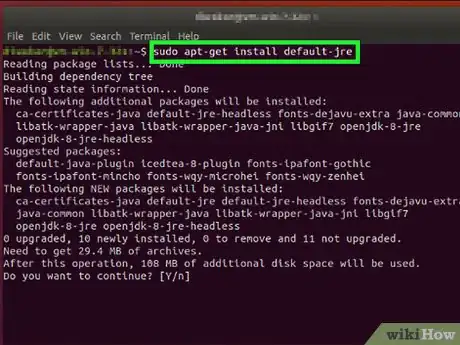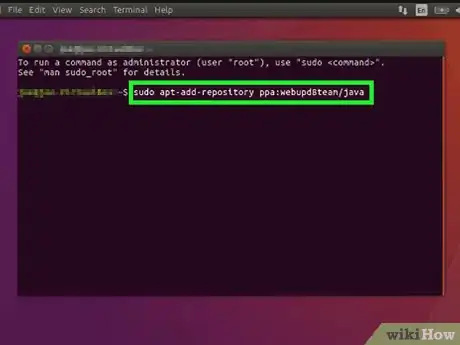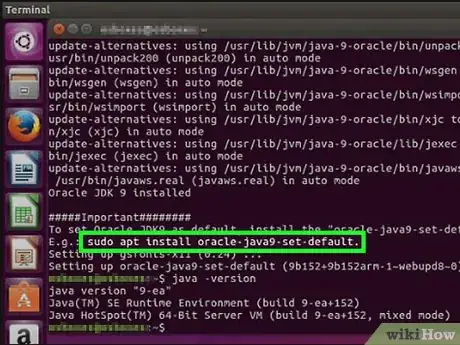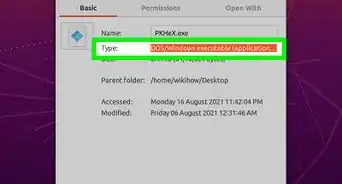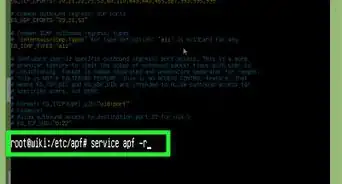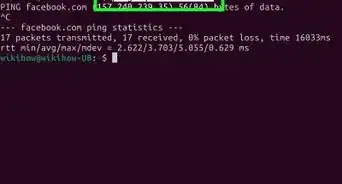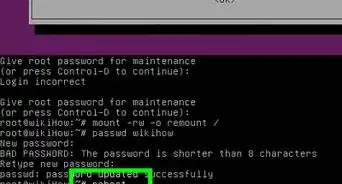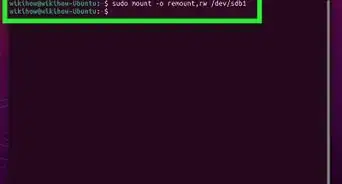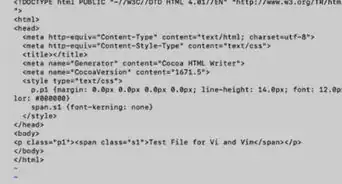X
This article was co-authored by wikiHow staff writer, Jack Lloyd. Jack Lloyd is a Technology Writer and Editor for wikiHow. He has over two years of experience writing and editing technology-related articles. He is technology enthusiast and an English teacher.
The wikiHow Tech Team also followed the article's instructions and verified that they work.
This article has been viewed 1,067,127 times.
Learn more...
This wikiHow teaches you how to install the latest version of the Java Runtime Environment (JRE) on a computer running Linux.
Steps
Method 1
Method 1 of 4:
Installing on Non-RPM Linux
-
1Open the Java for Linux download page. You'll see several options listed here.
-
2Click Linux. It's a link in the middle of the page. Doing so will prompt the Java installation file to download.
- You can also click the Linux X64 version if you want to install 64-bit Java.
Advertisement -
3Note the file's name. The latest version of Java is version 8, but you also need the update version number, which is written in the file name after the "8u" section.
- For example, your file might be named "jre-8u151", signifying that it is version 8, update 151.
-
4Open the command line. This step will vary depending on your version of Linux, but you can usually find the command line by opening the Terminal app or by clicking a bar at the top or bottom of the screen.
-
5Change the installation directory. Type cd into console, press the spacebar once, and then type in the path (e.g., /usr/java/ and press ↵ Enter.
-
6Enter the installation command. Type in tar zxvf, press the spacebar once, and then type in the full file name. This will vary depending on the Java version and when you downloaded it.
- As of October 2017, you'd type in tar zxvf jre-8u151-linux-i586.tar.
-
7Press ↵ Enter. Doing so will install Java on your computer in a folder entitled "jre1.8.0_[update]" where "[update]" is the update version number (e.g., 151).
Advertisement
Method 2
Method 2 of 4:
Installing on RPM Linux
-
1Open the Java for Linux download page. You'll see several options listed here.
-
2Click Linux RPM. It's in the middle of the page. Doing so will prompt the Java for RPM installation file to download.
- You can also click the Linux RPM X64 version if you want to install 64-bit Java.
-
3Note the file's name. The latest version of Java is version 8, but you also need the update version number, which is written in the file name after the "8u" section.
- For example, your file might be named "jre-8u151", signifying that it is version 8, update 151.
-
4Open the command line. This step will vary depending on your version of Linux, but you can usually find the command line by opening the Terminal app or by clicking a bar at the top or bottom of the screen.
-
5Enter the root command. Type in sudo su and press ↵ Enter. This will prompt the command line to request your user password.[1]
-
6Enter your account password. Type in the password for your account and press ↵ Enter. As long as you have root access on your account, doing so will allow you to install Java.
- If you don't have root access on your account, you'll need to enter the password for an account that does have root access.
-
7Change the installation directory. Type cd into console, press the spacebar once, and then type in the path (e.g., /usr/java/ and press ↵ Enter.
-
8Enter the installation command. Type in rpm -ivh, press the spacebar once, type in the full file name, and press ↵ Enter. This will install Java on your computer.
- The file name will depend on when you downloaded the file. As of October 2017, you'd type in rpm -ivh jre-8u151-linux-i586.rpm and press ↵ Enter.
-
9Upgrade the download. Type in rpm -Uvh jre-8u73-linux-i586.rpm and press ↵ Enter. This will check for updates for the Java package and, if possible, apply them.
Advertisement
Method 3
Method 3 of 4:
Installing on Ubuntu (OpenJDK)
-
1Open the command line. Press Ctrl+Alt+T on the keyboard, or click the black box icon with a white ">_" on it on the left side of the screen.
-
2Enter the update command. Type in sudo apt-get update && sudo apt-get upgrade -y and press ↵ Enter. This will refresh the package list and install all available updates for you.
-
3Enter your password if prompted. If asked for your user password, type it in and press ↵ Enter.
-
4Make sure that you don't have Java already installed. Type in java -version and press ↵ Enter. If you see a line that says "The program 'java' can be found in the following packages" appear, Java is not installed on your computer.
- If Java is installed, you'll see a line that reports the current version of Java instead.
-
5Type in the installation command. Type sudo apt-get install default-jre into the command line, then press ↵ Enter. This will install Java on your Ubuntu computer in the default directory.
- If this doesn't work, try entering sudo apt-get install openjdk-8-jdk instead
Advertisement
Method 4
Method 4 of 4:
Installing on Ubuntu 16.04 via PPAs
-
1First of all, this is a 3rd party package, your distro's maintainer can't audit this package, use with caution. That being said, first open a terminal by pressing Ctrl+Alt+T.
-
2Ensure you have an updated system. Type in sudo apt-get update && sudo apt-get upgrade -y, you might get prompted for a password, type it in and press ↵ Enter, no dots or asterisks will appear as you type, this is normal.
- While technically optional, this step is always recommended before installing anything, keeping your system updated will help prevent many problems.
-
3Add the PPA repository to your system. Type in sudo add-apt-repository ppa:webupd8team/java, and then press ↵ Enter.
-
4Update your package lists again. Type in sudo apt-get update and wait for the lists to be refreshed.
-
5Install the package. Type in sudo apt-get install oracle-java9-installer -y.
- You might get prompted for a password, type it in and press ↵ Enter, no dots or asterisks will appear, this is normal.
-
6Make Oracle's Java the default. In many Ubuntu derivatives, OpenJDK is set to be the default Java to be used, if you want Oracle's Java to be used by default you need to type sudo apt install oracle-java9-set-default.
Advertisement
Community Q&A
-
QuestionI can't run Java after installing it from a TAR. When I try the java -version command, it tells me that Java is not installed. When I try ./java, it opens a help page! What's going on?It sounds like the ./java worked, but you didn't include any parameters. Try using ./java -version and see what that gives you. Please note that you will have to use the full path to the Java binary every time that you wish to use Java. If you want to be able to execute it from anywhere without having to do that, you will need to add the binary to your PATH variable. If you're a beginner, it's strongly suggested that you use a GUI package manager to install Java and do this for you.
-
QuestionI installed with the first way, but cant get it to run. Any ideas?
 SomoneCommunity AnswerMake sure you have the right Java selected for your operating system, and make sure your OS is up to date.
SomoneCommunity AnswerMake sure you have the right Java selected for your operating system, and make sure your OS is up to date. -
QuestionI am connecting a Java project to its database. Do I have to install anything else apart from the JDK?You will likely have to download a Java library to assist your program in communicating with the database. It's recommended to use Maven or Gradle to assist with this.
Advertisement
Warnings
- Oracle Java is no longer supported on Ubuntu. Use OpenJDK instead (free implementation of Oracle Java).⧼thumbs_response⧽
- Oracle doesn't distribute .deb packages, any and all .deb packages for Oracle's Java is from a 3rd party and can cause harm to your system.⧼thumbs_response⧽
Advertisement
About This Article
Advertisement

